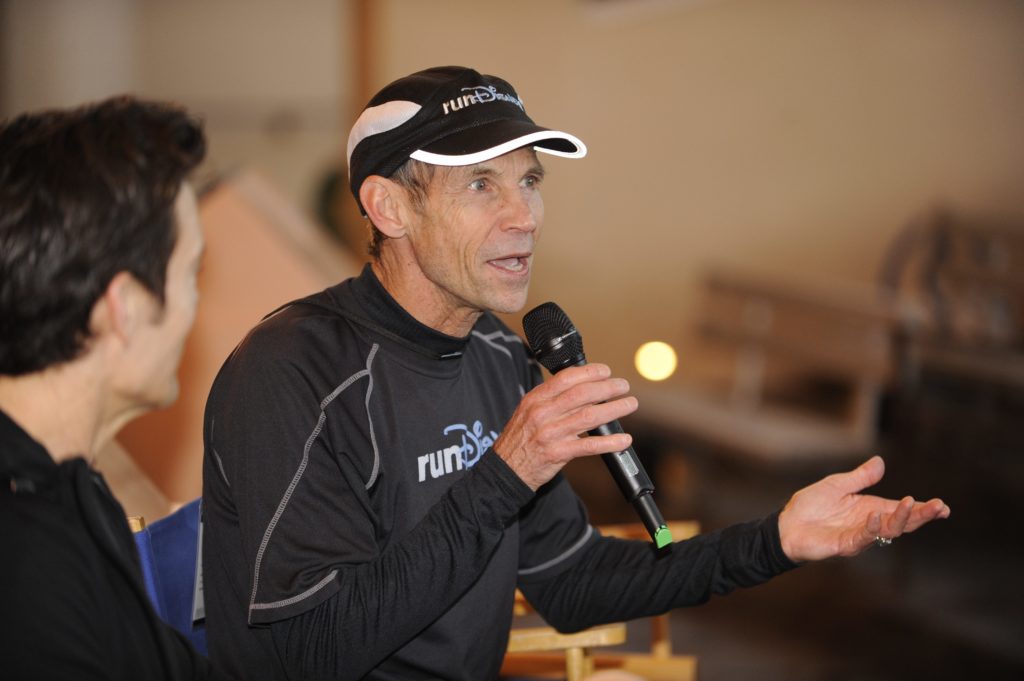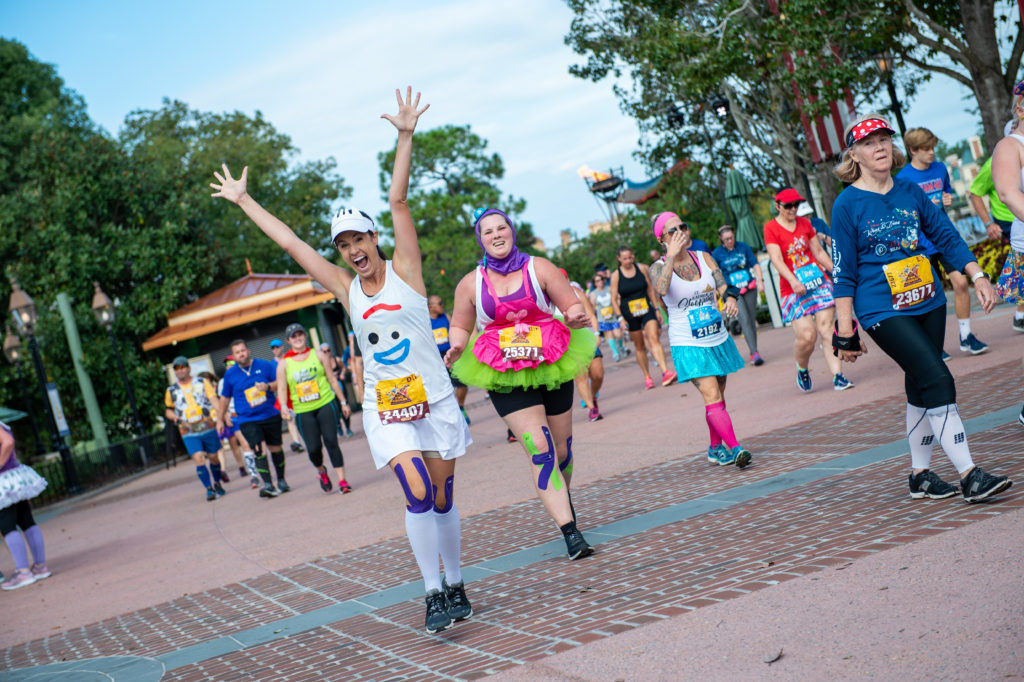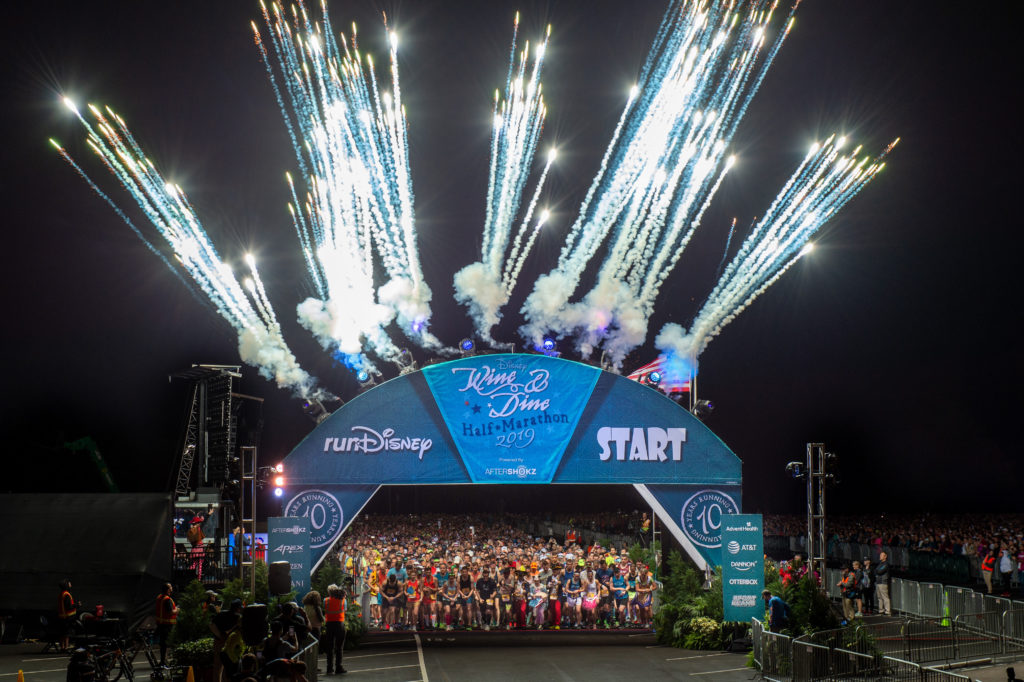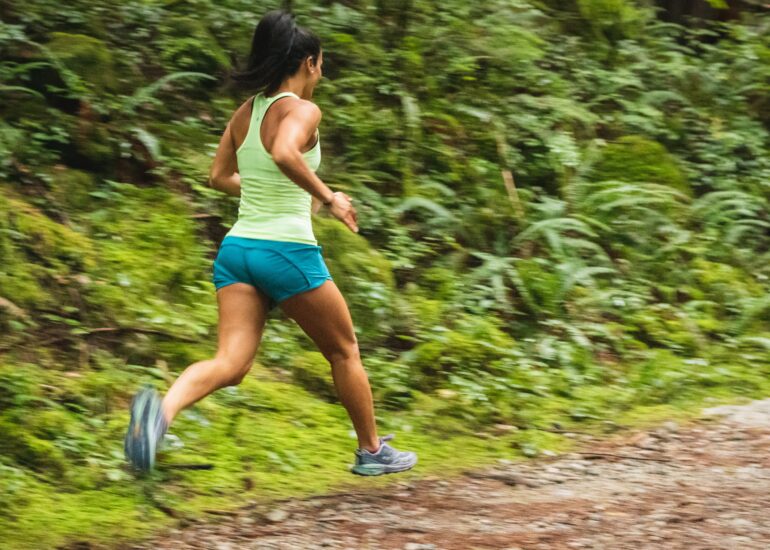Running is one of the most basic and effective forms of cardio out there — it’s inexpensive and accessible to everyone, can improve both your physical AND mental health, and — here’s the big one — it’s been proven to be better than any other exercise at making you live longer. But, running can be tough on your body and most hardcore runners have sustained more than a few injuries along the way.
Here’s the good news: Running doesn’t have to hurt, and training for a marathon doesn’t have to land you in physical therapy. Olympian and official runDisney training consultant Jeff Galloway pioneered a groundbreaking training method that has made distance running accessible to nearly everyone. Galloway’s “Run-Walk-Run” method helps runners run further, finish faster, and avoid injuries.
Whether you’re training for a 5K, 10K, half-marathon, or marathon, there’s a Run-Walk-Run training program that will work for you. Here’s how to get started.

Why ‘Run-Walk-Run’?
Galloway’s Run-Walk-Run method helps minimize injury and allows runners at all levels to work their way up at a comfortable pace, with plenty of recovery opportunities.
The basis for Run-Walk-Run is rooted in the fact that the human body hasn’t actually been built for long-distance running. Our ancestors didn’t run long distances — they walked everywhere.
“We’re marvelous long-distance walkers, but when you start trying to run long distances—we don’t have bones and joints that are inherently designed for that—there will be some things that break,” Galloway warns.

And that’s where Run-Walk-Run comes in. Runners following Galloway’s method insert a brief walking break (no more than 30 seconds at a time) between running segments.
“The insertion of a walk break strategically allows for the stress that has been building up to be dissipated and go away, and it also allows for the fatigue on muscles to go away,” he says. “This means you don’t have to go into the bad things that happen when you run.”
How Walking Makes Runners Faster
One of the most surprising aspects of Run-Walk-Run, Galloways says, is that inserting a walk break actually helps runners finish a race faster than they would if they ran the whole distance.
“Even among quite fast runners, those that shift from running nonstop to the right Run-Walk-Run improve their times,” he says. “Overall in a marathon, it’s over 13 minutes faster.”
Shortening run segments and taking walk breaks from the very beginning of a race helps reduce fatigue from start to finish.
“By shortening those run segments right from the start, you’re simply not as tired at 20 miles, at 23 miles, and you’re passing people,” he says. “And there’s nothing more empowering in life than passing people at the end of a long event, including the half marathon too.”
Galloway compiled data gleaned from advising more a million runners and has continuously refined the method to help runners identify their optimal pace per mile. His method allows runners to choose a Run-Walk-Run pacing structure that works best for them.
“Someone can give me a pace that they want to achieve and I’ll give them several options that have been working best for tens of thousands of runners in any given pace,” he says.
Here’s a look at sample Run-Walk-Run pacing:

Getting started
Newcomers to Galloway’s training plans, customized to every race distance from 5K and 10K to half-marathon, marathon, and multi-race challenges, and tailored for both beginning and experienced runners, will be pleasantly surprised at how easy it is to fit training into even the busiest schedule. In fact, you can train for a full marathon and never run more than three times a week — with two of those runs clocking in at just 30 minutes each.
To train for a race of any distance, or if you just want to become a regular runner and begin building up your running endurance, Galloway recommends a training program with three runs per week, typically Tuesday, Thursday, and Saturday. On Tuesdays, Thursdays, and every other Saturday, you’ll run just 30 minutes. On the alternate Saturdays, you’ll do a longer run. This long run is when you’ll gradually increase your distance, working up to and surpassing your race length before the big day.
Runners can choose to run more than three days a week, Galloway says, but sticking with the minimum of three days a week yields the lowest amount of injury.
Download a training plan for your distance and skill level.
How to Keep Track of Your Intervals
A frequently asked question from runners starting out with Run-Walk-Run is how do I keep track of my running and walking intervals without staring at my watch the whole time? I recommend an app called Run Interval that enables you to specify your intervals and it will beep to let you know when your next walk or run segment starts and finishes—no need to pause your music or podcast or stare at your watch. You can also buy a vibrating timer from JeffGalloway.com that will track and alert you to your intervals.
Sign Up for a Race!
The best way to get motivated to start running is to sign up for a race! I was introduced to Jeff Galloway and his Run-Walk-Run method when I signed up for my first runDisney race. As a long-time injury-prone runner, the method has changed my running life as has becoming part of the runDisney community, a passionate and supportive group of runners across the country. Meet a few of them.

After more than a year of virtual races, runDisney has announced the return of in-person running for the 2021-2022 race season, which will feature four themed race weekends:
- Disney Wine & Dine Half Marathon Weekend powered by AfterShokz: November 4-7, 2021
- Walt Disney World Marathon Weekend: January 5-9, 2022
- Disney Princess Half Marathon Weekend: February 24-27, 2022
- runDisney Springtime Surprise Weekend presented by Otterbox: March 31-April 3, 2022
General registration for the first of the four runDisney 2021-2022 race weekend opens July 13, 2021 at 10am ET.

More from Better:
- Get Inspired to Run a 5K With These Tips from Avid Disney Runners
- 6 Fitness Apps That Provide Instant Workout Motivation
- How to Get a Boarding Group for Star Wars: Rise of the Resistance at Disney World

Brooke Geiger McDonald is the national content director for Make It Better Media Group. A Chicago native, she has worked for publications like O, The Oprah Magazine and SHAPE Magazine and her work has appeared in Parents, TravelPulse, Attractions Magazine, MSN, Disney Food Blog, and more. At home, she is outnumbered by her husband and two sons, and the four of them are certifiable Disney and Star Wars fanatics, always counting down the days to their next Disney vacation. Her favorite nonprofits to support include The Walt Disney Birthplace and Shedd Aquarium. Follow her on Instagram @brookegmcdonald and Twitter @BrookeGMcDonald.

